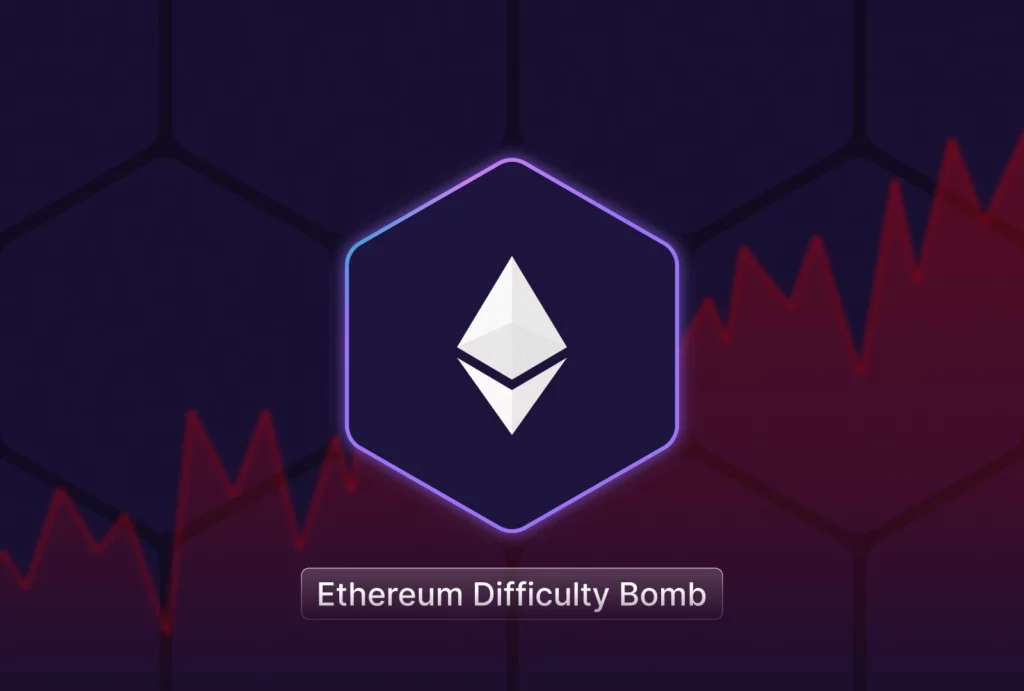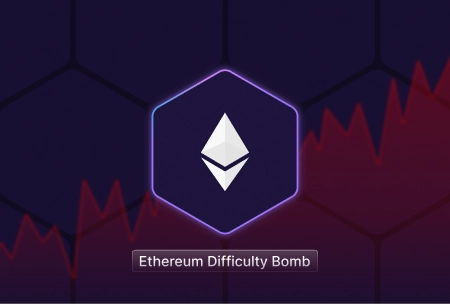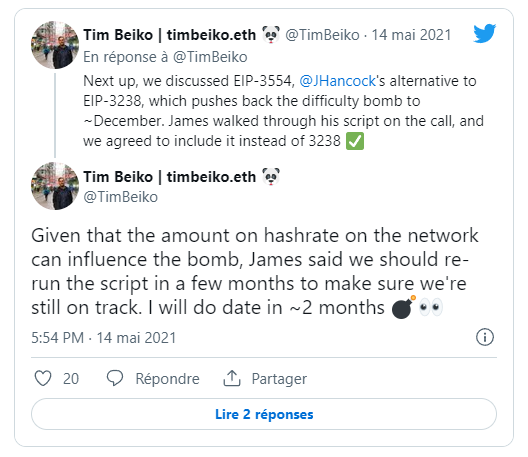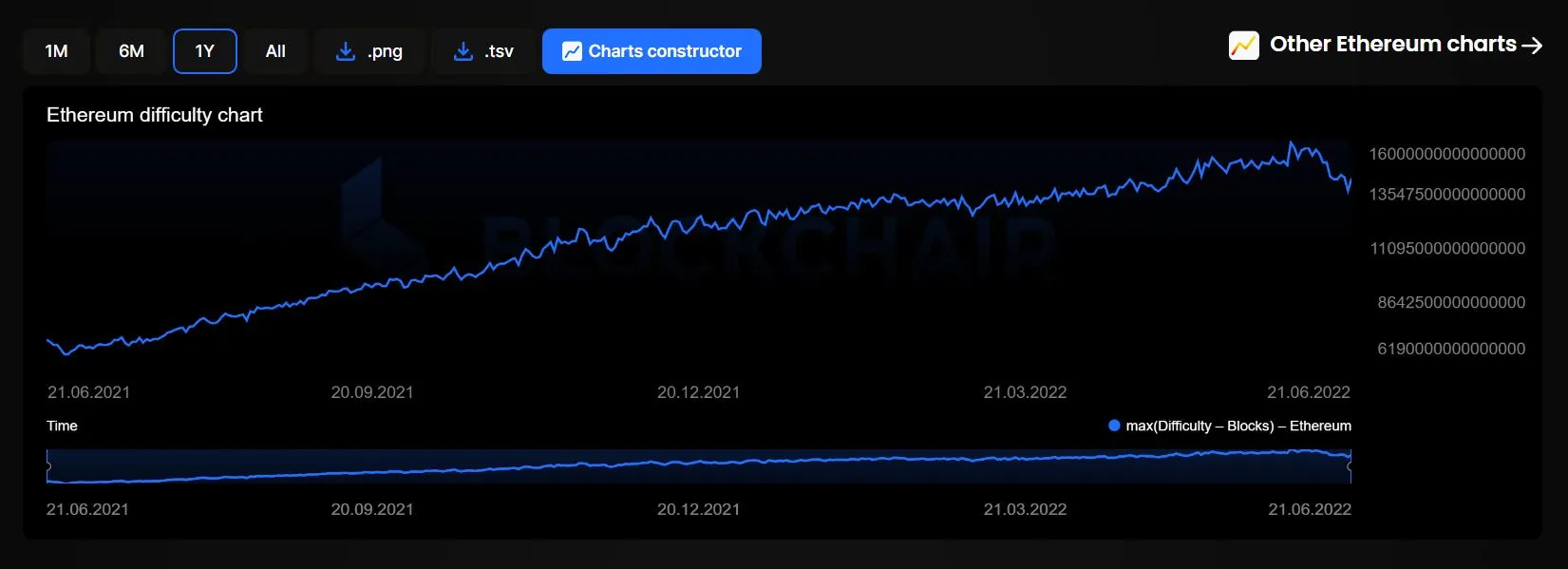What is the Ethereum Difficulty Bomb and what is its impact on cryptomining?


If you mine cryptocurrencies, you probably know that the Ethereum Network difficulty is increasingly a problem for mining.
We are talking about Ethereum Difficulty Bomb, a bomb that Ethereum developers have to defuse! If the defusing is not done in time, it could slow down or paralyze the Ethereum Network considerably.
The Difficulty Bomb is one of the features of Ethereum that defines increasingly difficult levels of the Ethash mining algorithm. We are talking about the problems that miners have to solve in order to receive rewards on the Ethereum Blockchain.
In this article, we will explain you to the Ethereum Difficulty Bomb, its origins as well as its impact on cryptomining.
Presentation and definition of the Ehereum Difficulty Bomb
Ethereum is considered the leader in altcoins by the majority of miners. The Ethereum Blockchain is not a pioneer in the field of cryptocurrencies, but its developers have managed to create a blockchain that is more transparent than Bitcoin’s.
The increase in popularity and value of Ether is mainly due to the widespread use of the Ethereum Network for dapps and smart contracts. It is through this strong democratization that we talk about Difficulty Bomb.
First appearing in 2015, the Difficulty Bomb is a term for the increasingly difficult levels of the Ethash mining algorithm that must be solved by miners to earn rewards on the Ethereum Blockchain.
The Ethereum Difficulty Bomb is also called EIP 3554. Its main objective is to accelerate the development of Ethereum 2.0 with the arrival of the Proof of Stake related to the implementation of staking.
With Ethereum 2.0, the difficulty of mining increases, making Ether mining less profitable for miners. This is the Ethereum Ice Age, an act done deliberately to prevent a secondary blockchain from being maintained after a hard fork. This forces old Ethereum node users to upgrade their nodes to the latest version.
Definition:
Ethereum Ice Age
This is a network difficulty adjustment system programmed to increase difficulty exponentially. With Ice Age, it is impossible for miners to keep up with the increase in difficulty, which would increase block time and cause the blockchain to freeze.
Ethereum developer Tim Beiko explained what the Ethereum Difficulty Bomb is during the first NiceTalk episode conducted by NiceHash last year:
As a reminder, Ethereum is still a Proof of Work blockchain. This means that members of the network must solve mathematical puzzles in order not to compromise the network. By solving puzzles, they verify the processes on the network. In return, they are rewarded with cryptocurrencies. It is this whole process that sums up the mining of cryptocurrencies.
In the early days of a blockchain and when few people were on it, the puzzles were usually easy to solve and require very little computing power. But as the process blocks grow and more miners join the network, more computing power is needed.
With the Diffculty Bomb, puzzles become more complex for miners to solve. This means that the time between creating new blocks will increase after the process is confirmed. This results in latency on the Ethereum Blockchain.
As the puzzles become more complex, miners must work harder to earn rewards. The computing power required increases while the rewards decrease. This phenomenon is due to what we call the Ethereum Ice Age. The Ethereum Ice Age marks the transition from the Proof of Work protocol to the Proof of Stake protocol.
What are the origins of the Difficulty Bomb?
The Difficulty Bomb concept was introduced in 2015 by Ethereum CEO and former business manager Stephan Tual. In a blog post, he explains that at 200,000 blocks or more, there will be an exponential increase in the Ethereum Network difficulty, increasing the time it takes to validate blocks. This justifies the desire to move from Proof of Work to Proof of Stake.
At the time, the goal was to encourage developers to implement Ethereum 2.0 as quickly as possible. By doing so, Ether mining becomes slower and less profitable over time, dramatically increasing the time lag between the production of each block.
Subsequently, the Ethereum Ice Age effects were to be valid until December 2016. This was supposed to result in the difficulty of verifying blocks, as if the Ethereum Network seemed frozen. But that did not happen. Vitalik Buterin, creator of Ethereum, explained the delays by stating that it will be a while before the Ethereum Ice Age happens.
In October 2017, there was another hard fork on the Ethereum Network. As part of the upgrade, the Ethereum Difficulty Bomb had to be delayed by 1.33 years, delaying the Ethereum Ice Age.
In January 2020, the Muir Glacier upgrade triggered EIP 2384, delaying the Ethereum Difficulty Bomb again. Hence this thread on Twitter in May 2021:

Tim Beiko and James Hancock, two Ethereum developers, said that the team would delay the Difficulty Bomb until December 2021. James Hancock’s proposal is to delay the bomb by 9,700,000 blocks and this is the last time the developers would have to suspend it.
In April 2022, the decision not to delay the Difficulty Bomb was made at an Ethereum Core Devs Meeting. But Tim Beiko acknowledged the possibility of delaying the Difficulty Bomb if things do not go as planned.
What are the real effects of Ethereum Difficulty Bomb on mining?
The effects of the Difficulty Bomb are becoming more and more noticeable, even though some miners are taking advantage of the 100% LHR GPU unlocking.
If we look at Blockchair.com, we can see that the time it takes to validate a block has increased considerably:

This increase in block time negatively affects several aspects of the Ethereum Blockchain. It means that transactions will take longer to be validated.
It also means that miners will experience a strong reduction in profitability due to the drop in Ethereum’s price and the current cost of electricity. This happens because the increase in block time leads to less cryptocurrencies being generated by miners. Many miners are stopping their mining activity, which reduces the hashrate decentralization of the Ethereum Network.
At the moment, the Ethereum Difficulty Bomb has experienced several delays. The only real solution to the Difficulty Bomb seems to be for the Ethereum Network to fully transition to Proof of Stake using Ethereum 2.0. However, as long as we continue to use Proof of Work, the Difficulty Bomb will continue to experience a lag.
Remember that Proof of Stake system has many advantages such as a greater emphasis on decentralization and requires less energy from the cryptoenthusiasts.
If you want to mine Ethereum, there are a few tricks to keep it profitable, besides unlocking 100% LHR GPUs. If you pay a lot of money for electricity, it may be more advantageous to choose GPUs with lower hashrates, but lower energy-consumption. It is up to you to take advantage of this!
Feel free to join our mining pool Cruxpool if you want to mine Ethereum with as little hassle as possible!